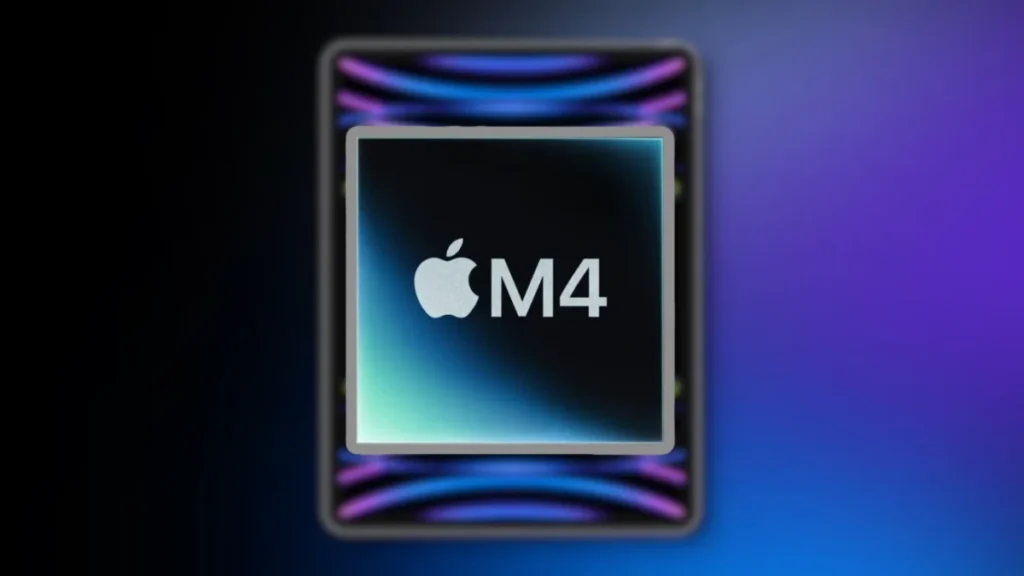Revolutionizing Portable Computing: The Power and Innovation of Apple’s M4 Chip. At the much-anticipated “Let Loose” event, Apple unveiled the groundbreaking iPad Pro equipped with the new M4 chip, marking a significant leap in performance and efficiency. This advanced processor, built on the revolutionary second-generation 3-nanometer technology, is not merely an incremental update but a transformative enhancement that propels the iPad Pro into new realms of capability.
The M4 chip, deriving its lineage from the M3 but significantly more advanced, focuses on maximizing energy efficiency—a crucial attribute for devices striving to maintain a slim and lightweight design without compromising on power. Apple’s engineers have meticulously crafted the M4 to elevate the overall performance, ensuring that the iPad Pro remains a frontrunner in the tablet market.
Central to the M4’s prowess is its OLED Tandem Ultra Retina XDR display management, which enhances the visual experience by delivering sharper colors, greater brightness, and improved energy efficiency. This display technology utilizes a tandem OLED setup, which layers two OLED panels to amplify light output and deliver stunning visual clarity, achieving peak brightness levels up to 1600 nits for HDR content.
From a technical standpoint, the M4 chip is equipped with up to ten CPU cores, though configurations vary across different models of the iPad Pro. For instance, the 256GB and 512GB models feature a nine-core CPU, which includes one less performance core than the more robust 1TB and 2TB versions. This scalable architecture allows Apple to tailor performance to specific user needs and price points.
Memory configurations also vary, with the 256GB and 512GB models equipped with 8GB of RAM, and the higher capacity 1TB and 2TB models boasting 16GB of RAM. This tiered memory approach ensures that users have sufficient power to handle complex tasks and multitasking demands.
Apple has also reengineered the GPU within the M4 chip, introducing a 10-core processor based on the architecture previously seen in the M3 chip. This new GPU supports Dynamic Caching, an innovative feature that dynamically allocates local memory on the hardware, enhancing GPU utilization and significantly boosting performance for demanding applications such as professional software and high-end games.
Moreover, the M4 chip includes hardware-accelerated features like ray tracing and mesh shading, which enhance graphical rendering for more realistic lighting, shadows, and reflections in games and 3D applications. These capabilities not only cater to creative professionals but also to gamers seeking console-quality graphics on a portable device.
Another highlight of the M4 chip is its enhanced Neural Engine, capable of executing 38 trillion operations per second. This marks a monumental 60-fold increase in speed compared to the first Neural Engine in the A11 Bionic chip, enabling powerful AI-driven features. These include Live Transcriptions, advanced visual searches in photos, and sophisticated video editing tools like subject isolation in 4K videos, all processed directly on the device for maximum privacy and efficiency.
Apple’s advanced media engine also plays a crucial role in the M4 chip’s capabilities, supporting major video codecs such as H.264, HEVC, and ProRes, and introducing hardware acceleration for the AV1 codec. This inclusion ensures smoother, more efficient streaming experiences, especially when consuming high-resolution content from popular streaming platforms.
The culmination of these technological advancements positions the M4-equipped iPad Pro as a powerhouse device that transcends the boundaries between tablets and laptops. With such profound enhancements, the M4 chip not only reshapes the capabilities of the iPad Pro but also sets a new benchmark for what consumers can expect from high-end portable computing devices.
In summary, the introduction of the M4 chip is a testament to Apple’s commitment to innovation and excellence. It not only enhances the iPad Pro’s performance and efficiency but also ensures that it remains at the forefront of the technology curve, delivering unparalleled experiences to users around the globe. As the tech community continues to explore the full potential of the M4 chip, it is clear that Apple has once again raised the bar for what is possible in the world of mobile computing.

